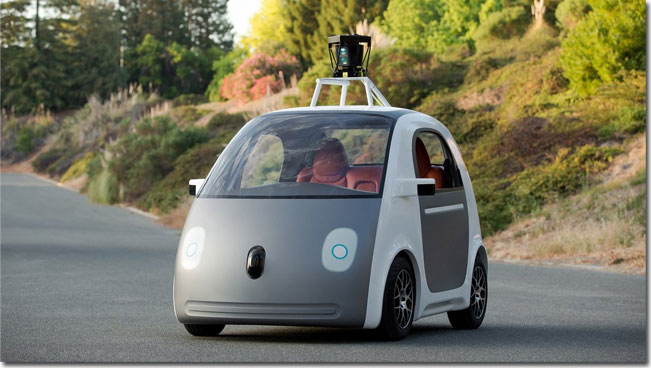
Google has always been a pioneer in the field of technology and the company appears to continue the exploration of new avenues with the unveiling of its latest product – a self-driving car. The vehicle – a two-seater without any sort of steering wheel – will rely on a software system and built-in sensors to manoeuvre around objects in a secure manner.
The vehicle which eliminates the need for a driver lacks the customary steering wheel, brake pedals and accelerator and the design for the car has been developed from scratch by the company.
On Tuesday, Sergey Brin, the CEO of Google Inc. unveiled the prototype model during an onstage interview at the Recode Code Conference held at Palos Verdes in California. He showed how the car makes use of innovative technology to safely manoeuvre itself instead of the customary car controls.
The ultimate target of the project is to devise self-driving cars which will be comparatively safer than man-driven vehicles within a span of few years. According to the test statistics so far, the project has experienced no crashes at the time of testing.
However, on the downside, the maximum speed at which the car is able to operate is only 25 miles per hours which provides it with a whole lot of time to react to incoming obstacles.
The ambitious project undertaken by Google aims to end human error behind the wheel with the aid of software. The company started working on the project early on in the year 2009 and its robo-cars have till now logged more than 700,000 hours. The Google Group expects to have them ready for use by the masses between 2017 and 2020.
The Google Self-Driving Car Project team earlier this month demonstrated how the vehicle depends on a topographical map devised by Google to get a sense of what it can expect on the road.
The map contains details regarding the height of the traffic signals above the street, the depth of the sidewalk curb, the placement of crosswalks and stop signs, the width of the lanes, and has the ability to differentiate between lane markings ranging from white to dashed to double-yellow.
